Noticing brown spots on what recently was your indoor plant juicy greenery? Is your favourite houseplant suddenly turning all brown? Seeing brown spots on spider plant in your room? Don’t panic. Even though there’s nothing deadly about it, that’s not a good sign. If your precious greenery could talk, it would probably convey a something’s-wrong message to you for sure.
To make a positive change about it and find the best treatment, knowing why exactly the leaf-browning process takes place. Cactus, monstera, aloe, succulents… We’ll leave no stone unturned when providing you with useful hacks on treating brown blotches on these and many more plants. And that’s exactly what we’ll dwell upon in this piece. Stay tuned and enjoy empowering yourself with knowledge.
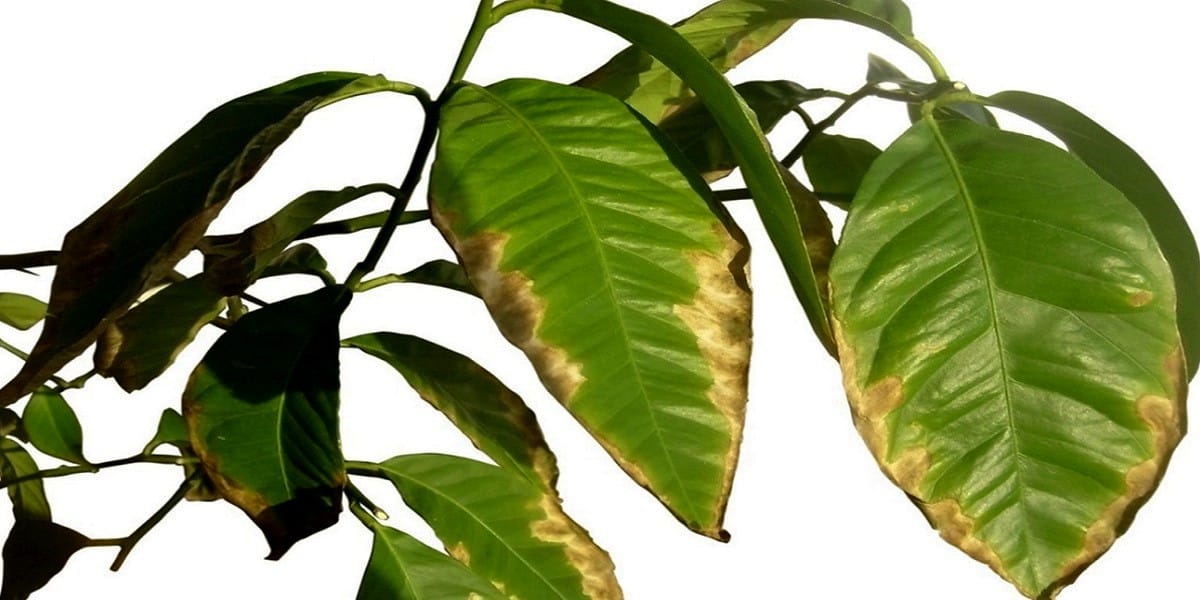
Brown Spots on Plants: Symptoms & Natural Remedy
First diagnose, then treat and prevent. This pattern is worth following if you’re looking to get rid of pothos brown spots. Below, we’ve rounded up the most frequent instances related to browning-foliage in houseplants:
1. Dry patches on foliage borders. What makes them pop up? Two words: insufficient and excessive watering. We’re sure that determining what exactly you’re dealing with out of the two is a piece of cake for you. Another possible cause is insufficient humidity in your garden.
How to solve:
- test the soil for dryness;
- determine the level of soil fogginess;
- pinpoint what exactly triggers foliage browning.
2. Blotches that resemble burns. There’s nothing more to this than meets the eye, actually. If you’re noticing darkish brown, dry patches on your houseplant foliage, you’re most likely dealing with sunburns. What does it mean? Three words: too much sunlight.
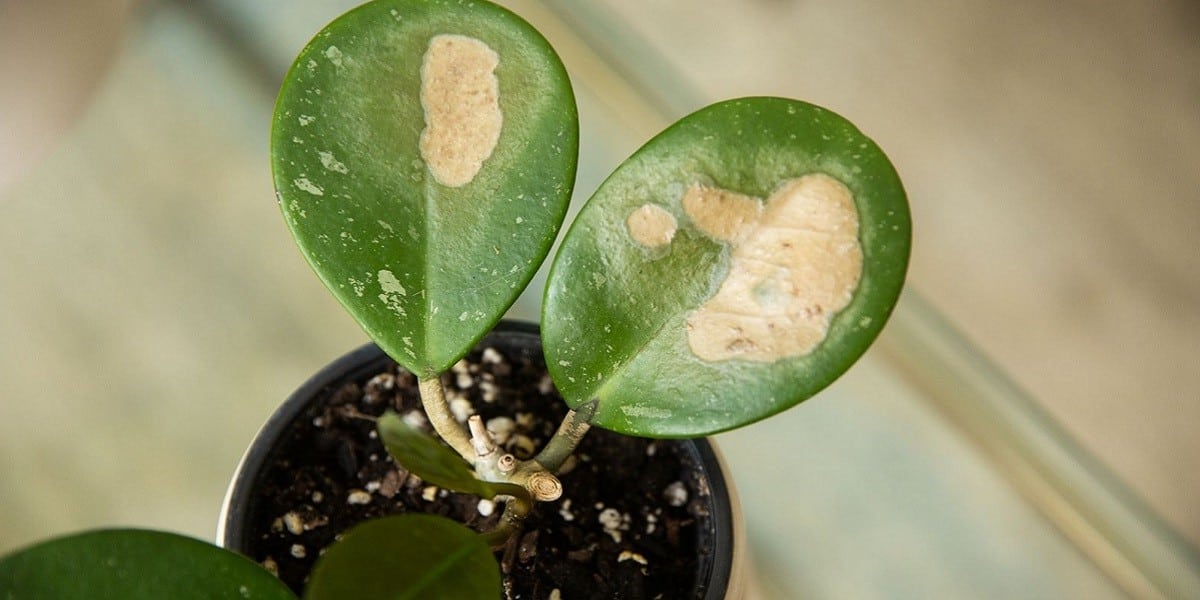
How to solve:
- relocate your greenery where it will enjoy partial sunlight;
- remove the plant from direct sunlight when it’s hot outside.
3. Moist brownish marks. What if your greenery displays these little darkish brown, wet blotches? A bacterial leaf spot is the possible answer. That’s a nasty bacteria, so get the natural treatment going to prevent the disease cycle from spreading further.
How to solve:
- remove the affected plant from other blossoms it stands next to for the purpose of preventing transmission;
- prune away the damaged foliage;
- wait until the baby gets all dry;
- water lightly (and only if the top soil level feels excessively dry);
- do away with the honey in case the damage is irreversible.
4. Yellowness or brownness that slowly expands. In case the awkward distinctly coloured blotches on your greenery tend to gradually enlarge, you’re most likely dealing with one of the fungus types known as anthracnose. Sounds scary, but you’ll easily fix this if you opt for isolating the plant, taking away the damaged foliage, and utilizing a top-level fungicide.
5. Amarillo halo-shaped blotches. These are most likely attributable to another type of fungus that emerges due to your irresistible desire to ‘bathe’ your plants and quench their thirst nonstop. Remove the damaged foliage, let the soil achieve a solid level of dryness, and only water your verdure when the upper 2 inches of soil exhibit solid dryness.
6. Tiny brown dots. Super small brownish freckles spread across your plant’s foliage may be caused by pest attacks. Actually, you’re most likely dealing with spider mites in this particular case. Engage in pest control and learn all there is to know about how to care for the exact type of plant you’re growing. With sufficient knowledge, experience, and persistence, you are bound to succeed in solving your brown spots on leaves problem.
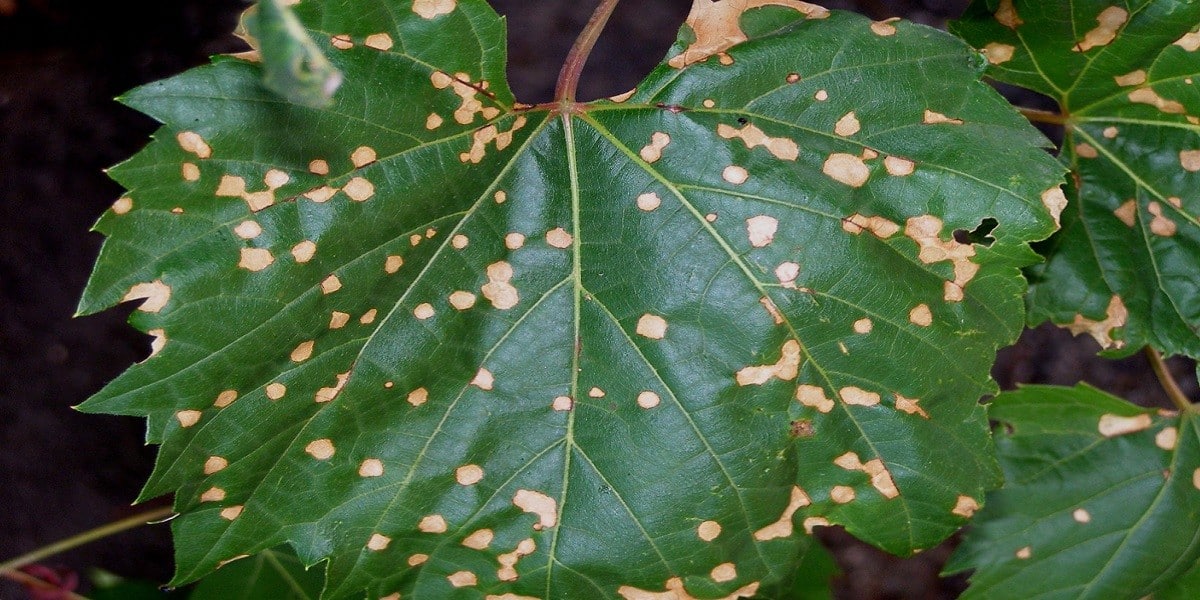
Foliage Browning: Possible Causes
Despite your efforts and aspirations, your garden greenery is not perfect (but what is?). Brown blotches appear on the foliage, the edges of leaves get crispy or get covered with holes etc. This can be caused by disease. However, before figuring out exactly what your precious plant kiddos are dealing with, we recommend that you leave your extreme worries behind and focus on gaining the in-depth knowledge.
Below, we’ve listed some of the major universal reasons why your garden plants may suddenly display brownish dots:
- insufficient humidity;
- mechanical damage;
- improper light exposure;
- unsuitable weather conditions;
- nutrient deficiency;
- pest infestation.
So, what about removing the damaged foliage? Should you or shouldn’t you? The answer is determined by the environment where your blossoming beauties grow. In case your greenery is full and fast-developing, losing several leaves won’t do any harm to its overall wellbeing. Now, with regard to, say, orchids, it comes with very few leaves by nature. Therefore, keeping the damaged leaf intact would be the best decision.
Solutions & Details Based on Plant Classification
Alas, both outdoor and indoor plants tend to fall victim to leaf-brownness. We’ve already figured out that in the majority of cases, yellow leaves with brown spots are traceable to the fungal background. The good news is that it will hardly destroy your blossoming babies for good. Just make sure you don’t ignore the problem and treat it with maximum seriousness — while turning to an effective preventative approach.
Below, we’ll track down the details behind leaf-brownness in the following plants:
- brown spots on cactus: this is usually caused by immoderate exposure to sunlight, critter attacks, extremely cold temperatures, immoderate wetness, fungicides, and infections. To cope with this issue, slicing off healthy stems and starting anew would be a great choice;
- brown spots on monstera: in the majority of cases, excessive watering is the answer to your ‘why’ in this respect. To solve the issue, hold yourself back and don’t ‘shower’ your precious plant too frequently;
- brown spots on aloe plant: various ailments, immoderate direct sunlight, pest attacks, and nutrition problems are among the reasons why this happens to your dearest greenery. Explore the topic in detail and learn all there is to know about the possible treatments;
- brown spots on snake plant: improper watering practices and fungus are among the main causes of this. Quick fixes imply testing the soil for wetness and adjusting the level of wetness accordingly, relocating the plant to a less humid area, and chopping off the dead leaves with sanitized tools;
- brown spots on orchid leaves: in case of these gorgeous blossoms, brown blotches are the result of bacteria-caused infection. The treatment is forthright: utilize straight hydrogen peroxide on the affected foliage and alter the plant’s environment to create infection-resistant conditions;
- brown spots on camellia leaves: this may be the sign of the foliage being either burnt or affected by extreme cold weather. To fix the issue, adjust the plant’s environment accordingly;
- brown spots on succulent leaves: galvanized by dead cells, these dark blotches are usually caused by high levels of humidity, calcium and phosphorous deficiency, as well as excessive watering and insufficient light. Furthermore, your succulents may ‘sport’ brownish blotches due to natural aging, chemical damage, fungus, extreme heat, pest invasion, out-of-the-blue temp shifts, and root issues. Looking for effective solutions? Make a positive change based on the aforementioned factors and learn all there is to know about your precious plant’s needs;
- peace lily brown spots: this is an indicator that your peace lily is exposed to immoderate sunlight. This may later lead to leaf burning and scorching. Furthermore, your peace lily foliage may also get brown spots due to extreme wetness, underwatering, poor drainage, and improper lighting. Solving the issue is solely up to you and your will to take good care of your gorgeous plant.
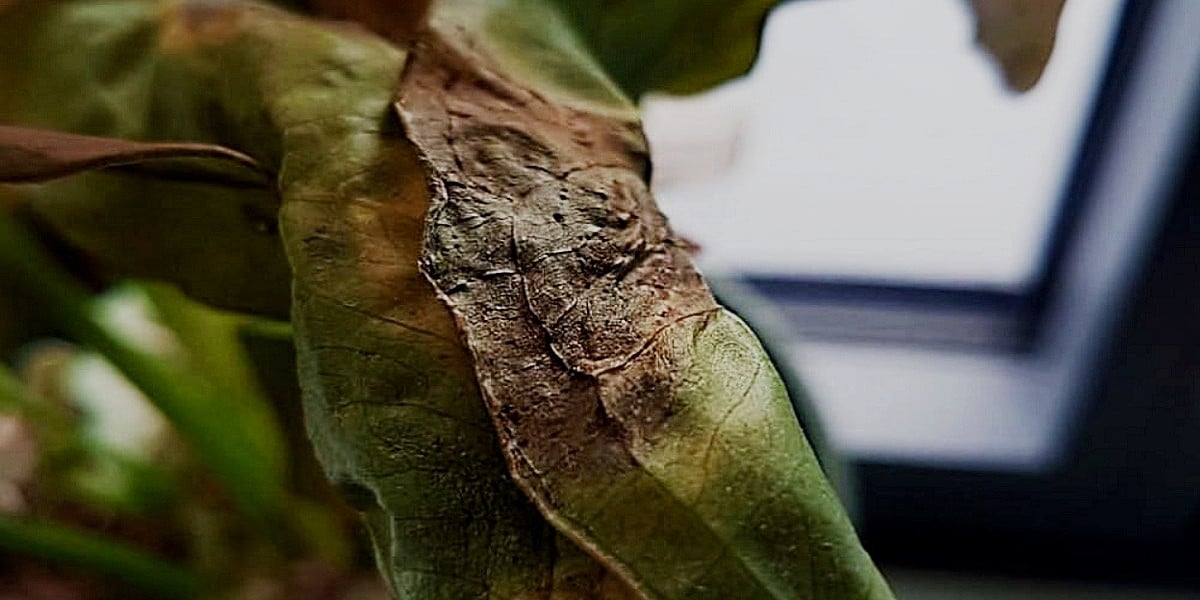
With all that said, whether we’re covering basil brown spots or foliage browning of any other plant, the markers and potential cures are pretty much similar. Aside from brown, the damaged spots on your leaves can come in an array of colours: orange, black, yellow, and red. The same goes for their shapes and sizes.
Leaf Spot Diseases to Be Aware Of
Taking good care of your precious garden blooms requires exploring the following leaf spot diseases and researching the treatments:
- Septoria. Round and with black edges, brown spots in this case resemble mold growing on your foliage. Over time, if you don’t do anything about it, the leaves will start shrivelling and blackening. In the long run, they will fall off and die.
- Venturia. As this particular disease develops, brown and black spots will show up on your greenery resulting in its texture irregularity. Only young leaves are prone to this disease.
- Anthracnose. This fungal disease affects a limited number of plants. The main symptoms include tiny beige, brownish, or black spots. So, if you’re noticing brown spots on palm leaves, chances are you’re dealing with anthracnose.
More Hacks on Warding off Brown Spots
In case your gardening efforts and aspirations are crashing against the rocks of brown-leaf-related diseases, and there’s nothing you can do about it, you’re welcome to turn to professional help. Hire an arborist who will solve your problems swiftly and effectively.
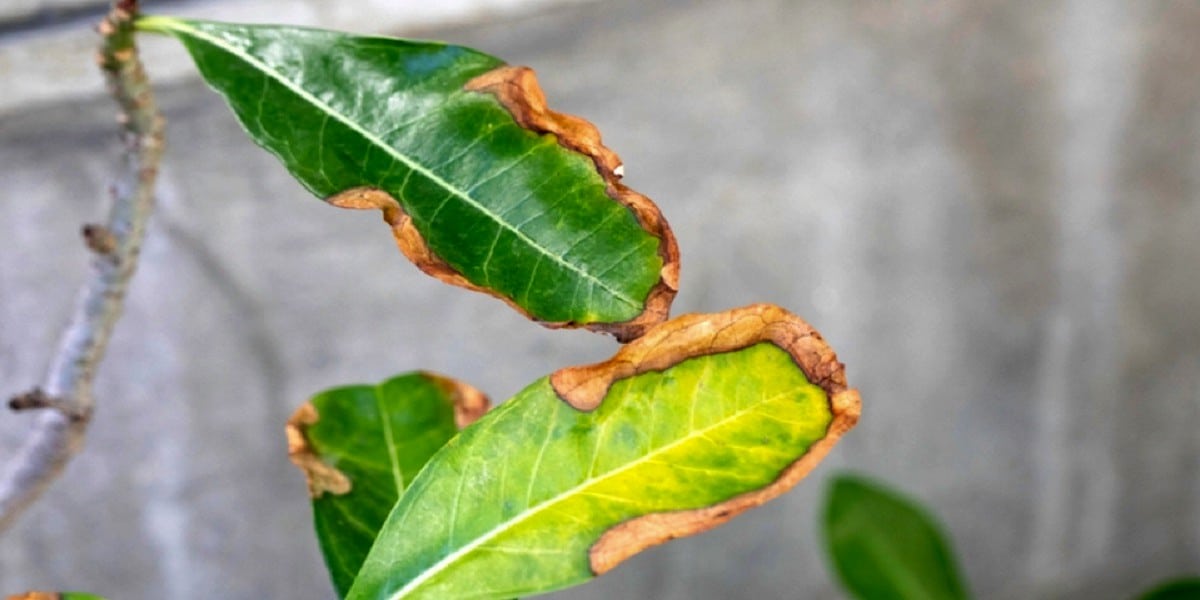
Here are some more recommendations if you’re looking to continue coping with the issue under your own steam:
- fungicide and fertilize: these are preventative measures that need to be sorted out prior to any markers of the disease showing up. Before utilizing a fertilizer, check the soil for pH levels and nutrition specificities;
- moisturize properly: only shower the roots and soil, without wetting the foliage. Ensure the soil is dry enough prior to shower the plant again. Apply mulch on a yearly basis, but try not to form a mulch volcano, for it is likely to result in root rotting, sickness, and destruction;
- space and prune: do not locate your garden plants too close to each other to stave off overcrowding. This, in its turn, will aid you in avoiding fast disease transmission. Also, don’t forget to shape up your plants using sanitized garden tools to stimulate better air circulation;
- do away with debris: whether it’s about snake plant brown spots or brown spots on philodendron, getting rid of all your garden leaf waste as soon as you can is a must. Avoid utilizing the decayed foliage in your compost pile.
Bottom Line: Patience and Persistence Are Key
Now that you’re aware of how to identify yellow leaves with brown spots on your indoor or outdoor greenery, feel free to put this knowledge to practice. What’s crucial here is to act precisely based on the knowledge you’ve gained i.e., adjust the environment and maintenance routine to your precious flower or shrub needs.
Diseases and critters weaken and stress out your greenery. Work on improving your garden kids’ immune system. This will influence how effectively it will fight their potential ailments and infections.
All in all, learn to exercise maximum patience and persistence when polishing your garden enchantment to perfection. Your plant recovery may take some time, so be ready to work on it and wait. Keep tabs on its condition and take action whenever damaged leaves get moldy or drop dead. Learn all there is to know about the issue of foliage browning. Knowledge is power, that’s a fact. Thus, with sufficient analysis, skills, patience, and determination, your chances of bolstering your entire garden’s wellbeing get a significant boost.
Long story short, you are fully responsible for your plant kids, which means caring for them is your daily mission. Upon noticing that your tree or plant shows some strange spots, halting the transmission of the possible infection is paramount. If you’re challenged by this task or need assistance identifying what precisely is wrong with your verdure, call a local gardening expert to assist you with pruning and any other upkeep measures that will bring your greenery back to a healthy life. Don’t forget to bookmark this page for further updates on the topic of plant leaf diseases.
Leave a Reply
You must be logged in to post a comment.